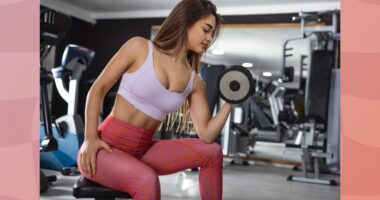Wellness
oi-Amritha K
on June 26, 2021
To control and manage the COVID-19 pandemic situation, health authorities around the globe have advised everyone to stay in self-quarantine and wear a face mask while venturing out of homes to minimise the risk of spreading the disease.
Face masks offer protection against respiratory and reduce community transmission, making masks one of the easiest ways to prevent the spread of coronavirus disease. As a result, masks have become a part of our new normal, which in a way, is no longer ‘new.’
A mask also offers some protection to you. However, how well it protects you from breathing in the virus likely depends on the fabrics used and how your mask is made, such as the type of fabric, the number of layers of fabric, and how well the mask fits.
Amidst the second wave and the possibility of a third wave in India, health officials around the country advise people to double mask amidst the fast-spreading nature of the new COVID variants [1]. The Centers for Disease Control and Prevention (CDC) had said the same in the month of February after a study revealed that wearing two masks provided more protection than one and advised people to wear masks at home [2].
As the importance of masks increases on a daily basis, here are some Dos And Don’ts Of Wearing A Face Mask. Let’s take a look.
COVID-19 Waves Explained: Why Do New COVID Waves Occur?

Dos And Don’ts Of Wearing A Mask
Dos
- Wash your hands before putting your mask on and again when taking it off [3].
- Choose a mask that conforms comfortably to your face. A mask that is too big or too small makes it difficult to cover your face properly and fits snuggly from nose to chin.
- Cover your nose and mouth. Your face mask should cover both your nose and mouth at all times for best results.
- Do wear a face mask in public around others who do not live in your household.
- For people with glasses: Once you have pressed your mask’s nose clip against your face, rest the nose pads of your glasses on the topmost part of your mask to keep your breath from fogging up the glass. Or wash your glasses with soapy water before putting them on – the soap can leave an invisible film behind that act as a fog barrier.
- Do wash the cloth masks in hot water daily or when soiled.
- Keep masks in a clean, dry place.
- Do continue to wear a mask if you are not fully vaccinated.
- Don’t wear your face mask upside down. Don’t wear your mask below the nose, around your neck, or on your forehead.
- Don’t continue to use a mask that is dirty, damaged, or ripped [4].
- Don’t pinch your face mask’s nose clip. A pinched nose clip won’t fit as well and can result in a gap at the bridge of the nose. Instead, use both hands to bend the nose clip until the mask rests snugly against your nose and cheeks.
- Don’t take your mask off in public if you are within 6 feet of others.
- Don’t touch your face while wearing your mask in public.
- Don’t take your face mask on and off.
- Don’t touch or handle the mask by the front. Instead, use ear loops to remove the mask.
- Don’t pull your face mask down under your chin or let it dangle from one ear.
- Don’t reuse disposable face masks.
- Don’t use masks on young children under the age of two.
- Don’t wear a mask while participating in activities where the mask may become wet, such as swimming.
- Don’t keep face masks in your purse or pocket to reuse later.
- More importantly, DON’T FORGET YOUR MASK.
COVID-19: Proper Use, Reuse And Disposal Of Masks, Verified By Experts
Don’ts

Types Of Face Masks
(1) Cloth masks: These are good for covering your mouth and nose and are not recommended when caring for infected patients. Health experts point out that you can improve or upgrade your cloth masks by using a HEPA filter which can help increase their effectiveness against the infection [5]. These can be reused if it is properly washed, disinfected and dried.
(2) Surgical masks: They are slightly loose-fitting, disposable masks approved by the Food and Drug Administration (FDA). Made of polypropylene, these disposable masks may effectively block particle droplets and splashes that can contain germs [6]. Surgical masks also help in keeping the pollutants and irritants from reaching the mouth and nose. If it is dry and the layers are in place, keep it in a zip lock pouch with a desiccated (silica) gel because the gel will absorb the moisture and keep the mask dry. If the mask is intact and not torn, it can be reused for three days.
COVID-19: Are Cloth Masks And Surgical Masks Ineffective In Preventing Virus Spread?
(3) N95 respirator masks: Respirators, also called N95 respirator masks, are specially designed to protect against germs in the air, like viruses. It covers your face to prevent airborne viruses from entering through the nose or mouth and are much more effective at preventing the virus than regular face masks [7]. N95 masks are to be only used by persons caring for sick persons with respiratory infections and symptoms like cough, sneezing and fever, and health care and frontline workers. When reusing the N95 respirator, leave a used mask in the dry atmosphere for 3-4 days to dry it out.
READ RELATED: Husband with dementia has finally been able to reconnect with his wife – using a 'Music Memory Box'

How To Properly Double Mask?
The spike in the number of mutant variants of SARS-CoV-2 would mean that wearing just a cloth mask will not give adequate protection against the COVID-19 infection. However, the ‘double masking’ method could create a stronger barrier against the deadly viral disease, according to the experts.
Here is how you can double mask yourself and protect yourself from respiratory illness [8].
- Layer a cloth mask on top of a surgical mask – this helps the entire setup fit more snugly and eliminates gaps around the sides of the face or nose.
- Make sure the fit is comfortable and doesn’t have gaps.
- Choose a cloth mask made of multiple layers of tightly woven, breathable fabric that includes a nose wire so that you may fit it properly around the nose area.
- You can check for the mask’s material by holding it up under a bright light source. If it blocks the light, then it’s of good quality.
- You can also use a mask brace, a device made from an elastic material. It fits over the masks and helps prevent air from escaping from the top and sides of the mask.
- Do not use cloth masks with an exhalation valve or vent. It can allow respiratory droplets to leak into or out of a mask [9].
- Don’t wear more than one disposable mask at one time.
- Handle the mask only by its ear loops, cords or head straps and not the surface.
- Do not wear a KN95 mask, a filtering face-piece respirator with any other mask.
COVID-19: How To Properly Double Mask And Double Masking Dos And Dont’s
Don’ts Of Double Masking

What Are The Levels Of Risk Of Not Using A Mask?
According to study findings [10]:
- the risk is 1.5 per cent (low) when both people are wearing masks,
- 5 per cent (medium) when only the infected person is wearing a mask and uninfected persons are unmasked,
- 30 per cent (high) if the infected person is not wearing a mask, but the uninfected person is wearing one,
- and 90 per cent (highest) when neither the infected nor the uninfected person is wearing a mask.

Why Have The Health Authorities Recommended Wearing Mask At Home?
The sole purpose of this recommendation is to break the chain of transmission. A study by the Department of Community Medicine has revealed that up to 56 per cent of infected persons contracted the virus from their family members last year. So, let’s break down the reasons behind using masks at home and help curb the transmission of the SARS-CoV-2 virus [11][12].
- COVID-19 primarily spread from person to person through respiratory droplets that travel in the air when someone coughs, sneezes, talks, shouts, or sings.
- The droplets in the air can land in the mouths or noses of people in the vicinity or may be breathed in.
- The risk of transmission is high when there is a distance of 6 feet between two persons and when both of them are wearing masks.
- Asymptomatic people can continue to spread the infection when they are talking, at home, at a faster pace.
- Asymptomatic can spread the infection, one of the major reasons attributed to reports of entire families testing positive, even when most of them have stayed indoors.
- Masks are intended to protect others from Covid-19 and not just the wearer.
- By masking at home, the elderly and those with co-morbidities can be protected, even if one member of the family has an asymptomatic infection.
COVID-19 Delta Plus Variant: Everything You Need To Know About This Variant Of Concern

On A Final Note…
Masks are a simple barrier to help prevent your respiratory droplets from reaching others. Studies show that masks reduce the spray of droplets when worn over the nose and mouth. So you should wear a mask, even if you do not feel sick. And this is a healthy habit you should consider following even after the pandemic subsides.
Even when you are fully vaccinated, continue to wash hands frequently, cover coughs/sneezes, stay home when sick, and follow local public health guidance.
GET THE BEST BOLDSKY STORIES!
Allow Notifications
You have already subscribed
Story first published: Saturday, June 26, 2021, 16:20 [IST]
Source:









